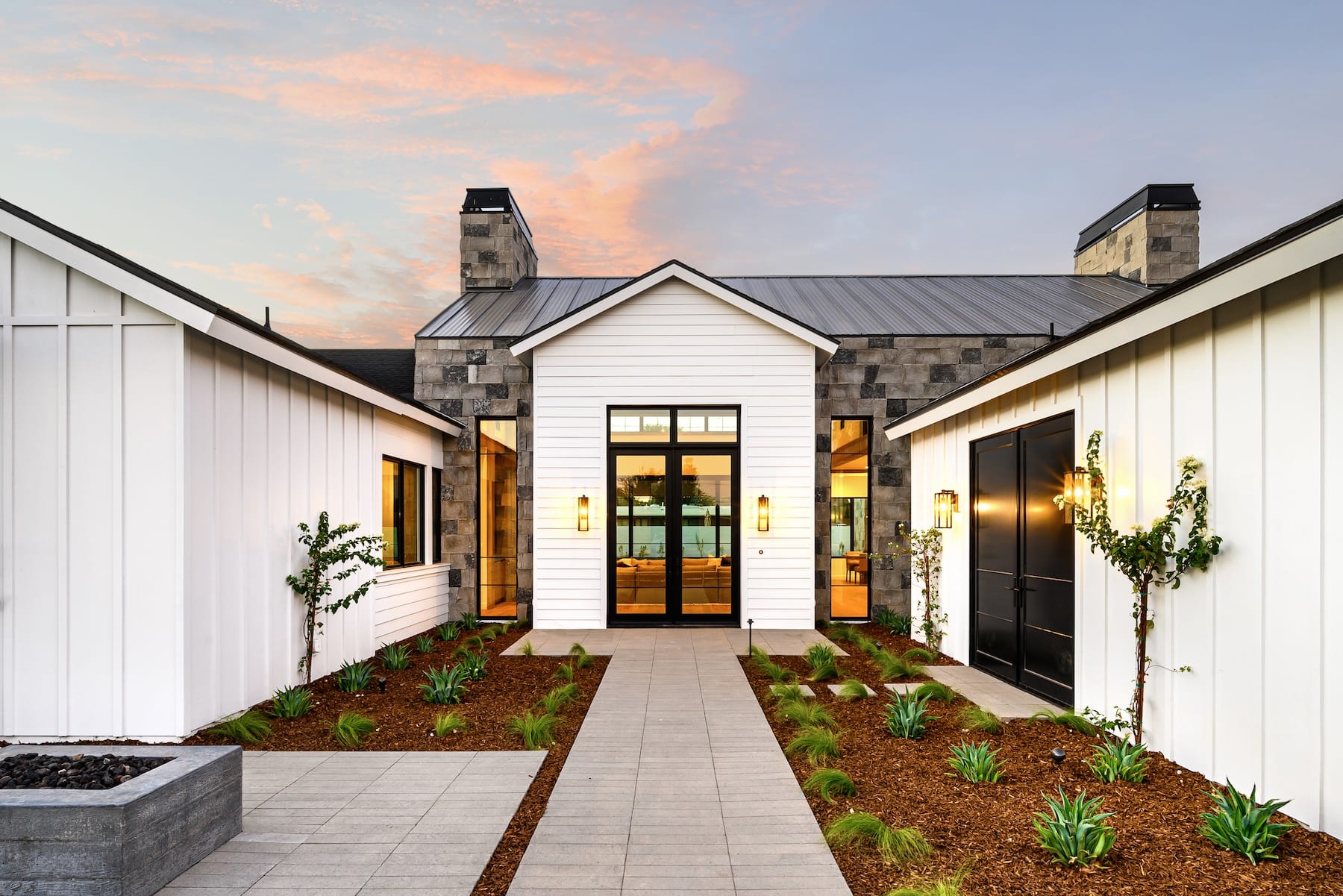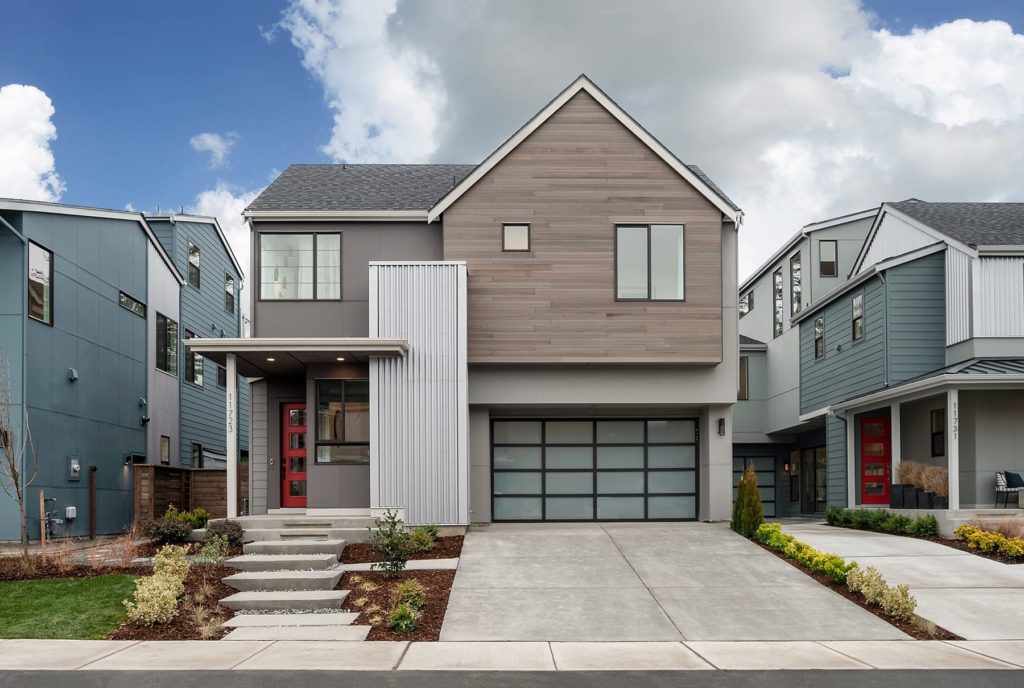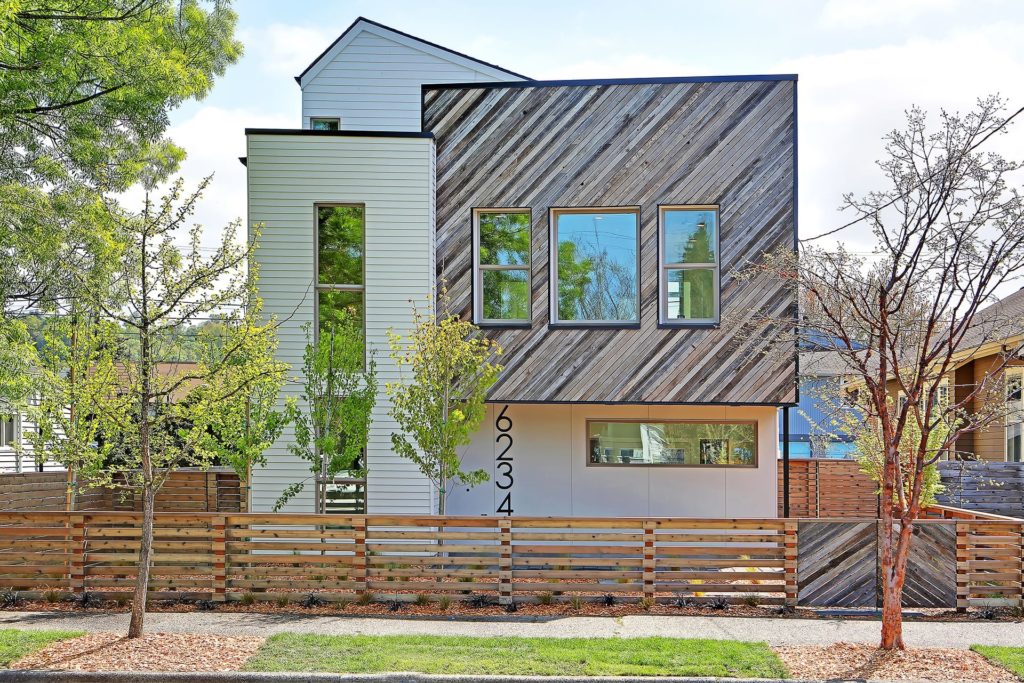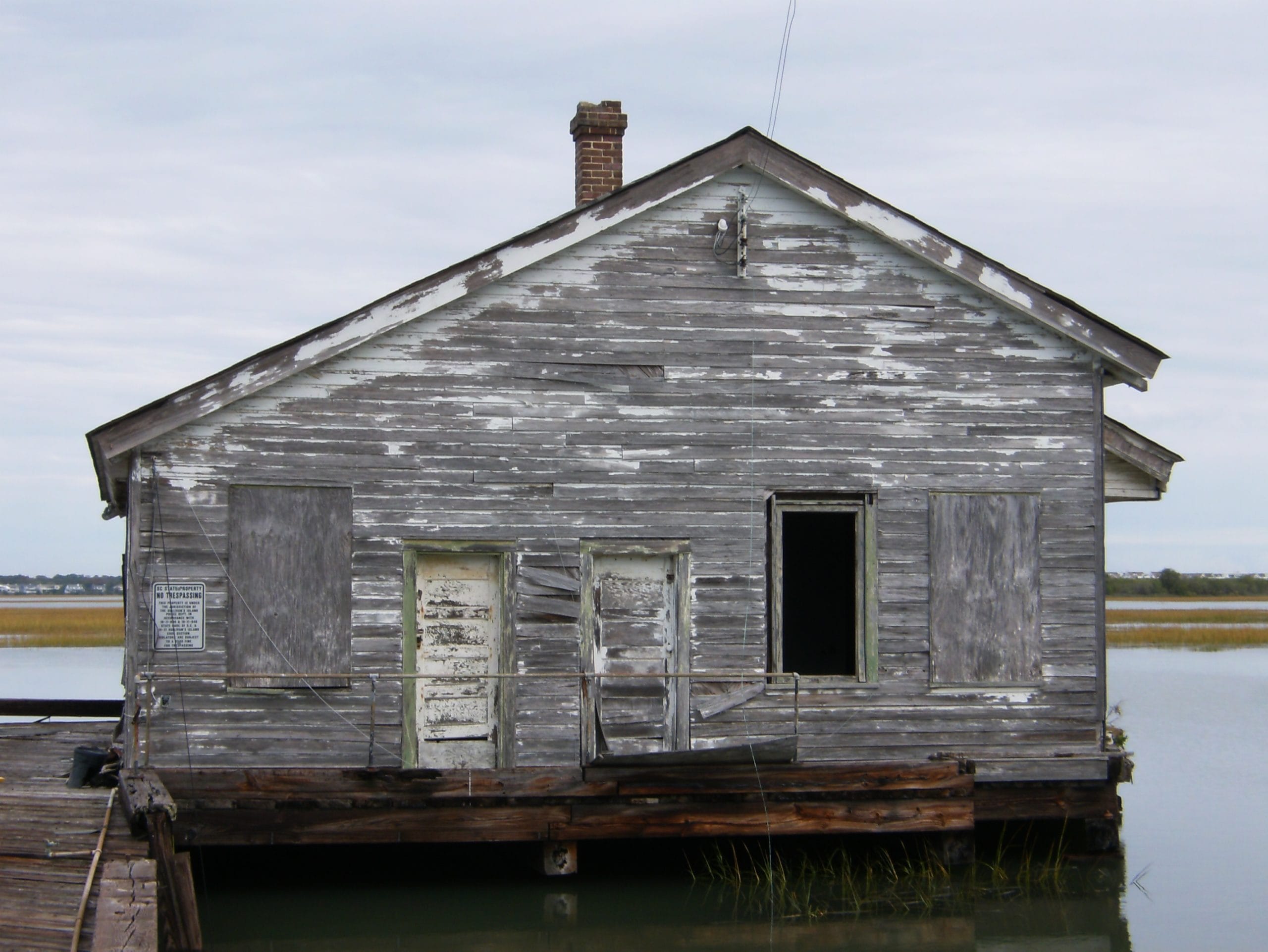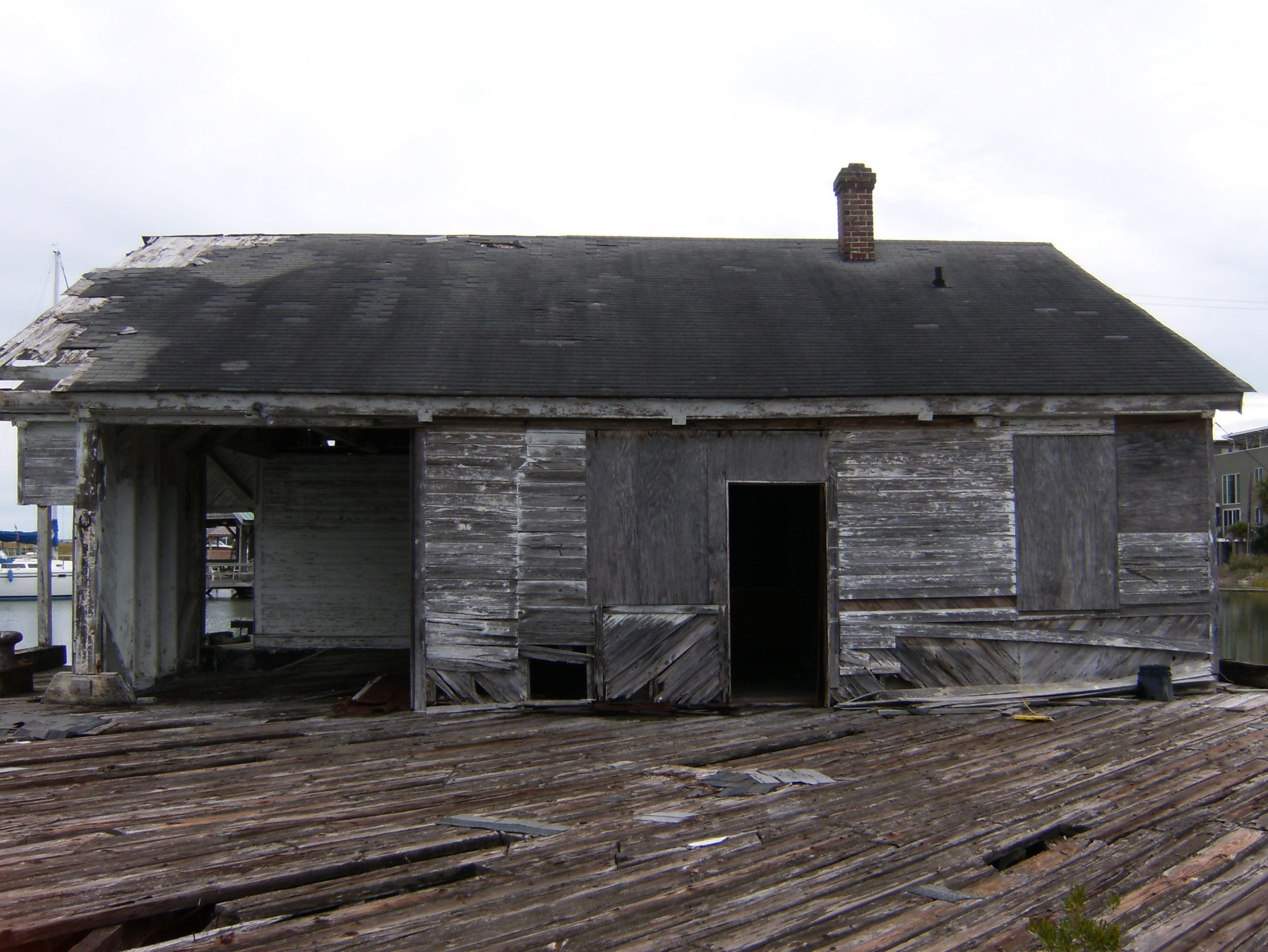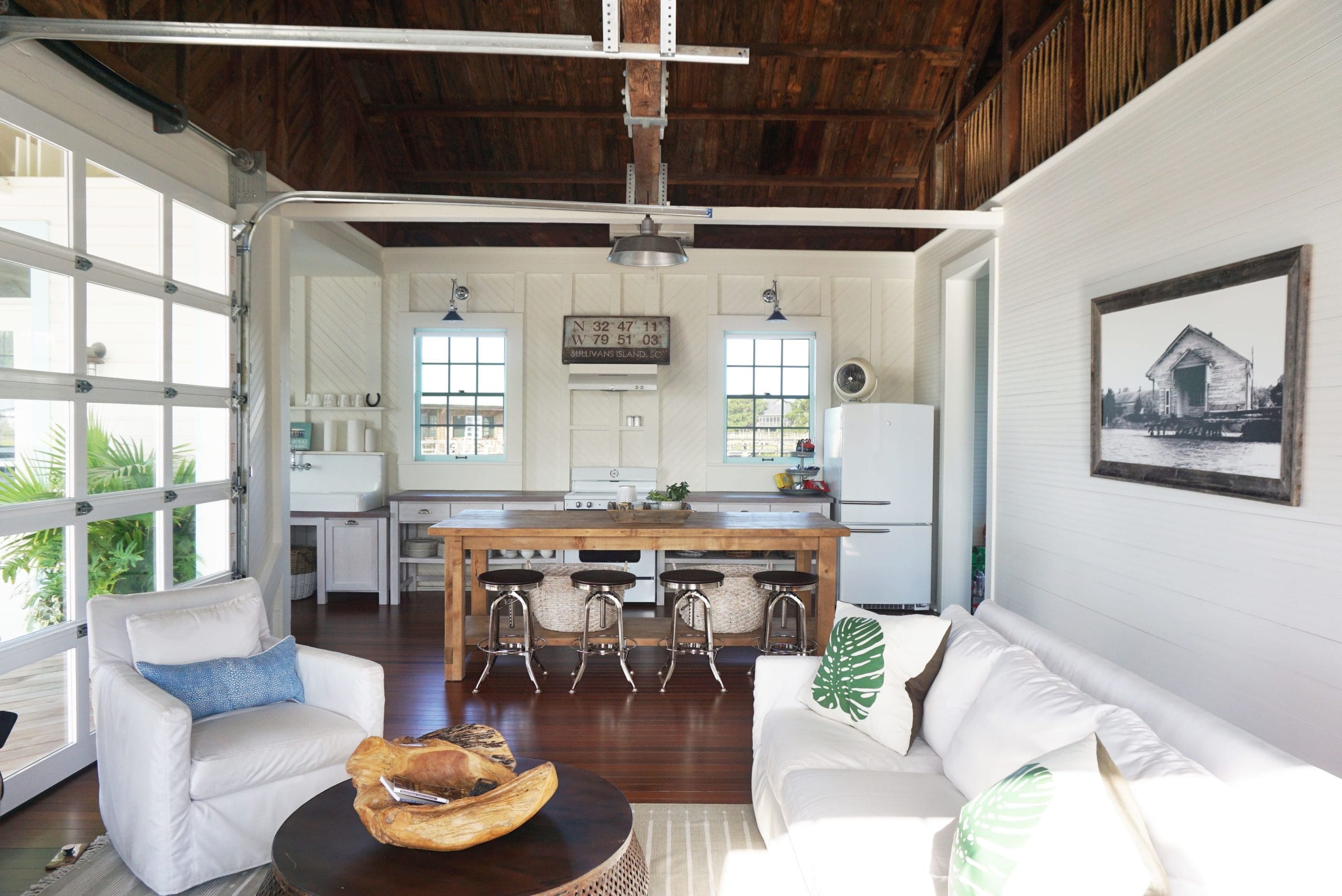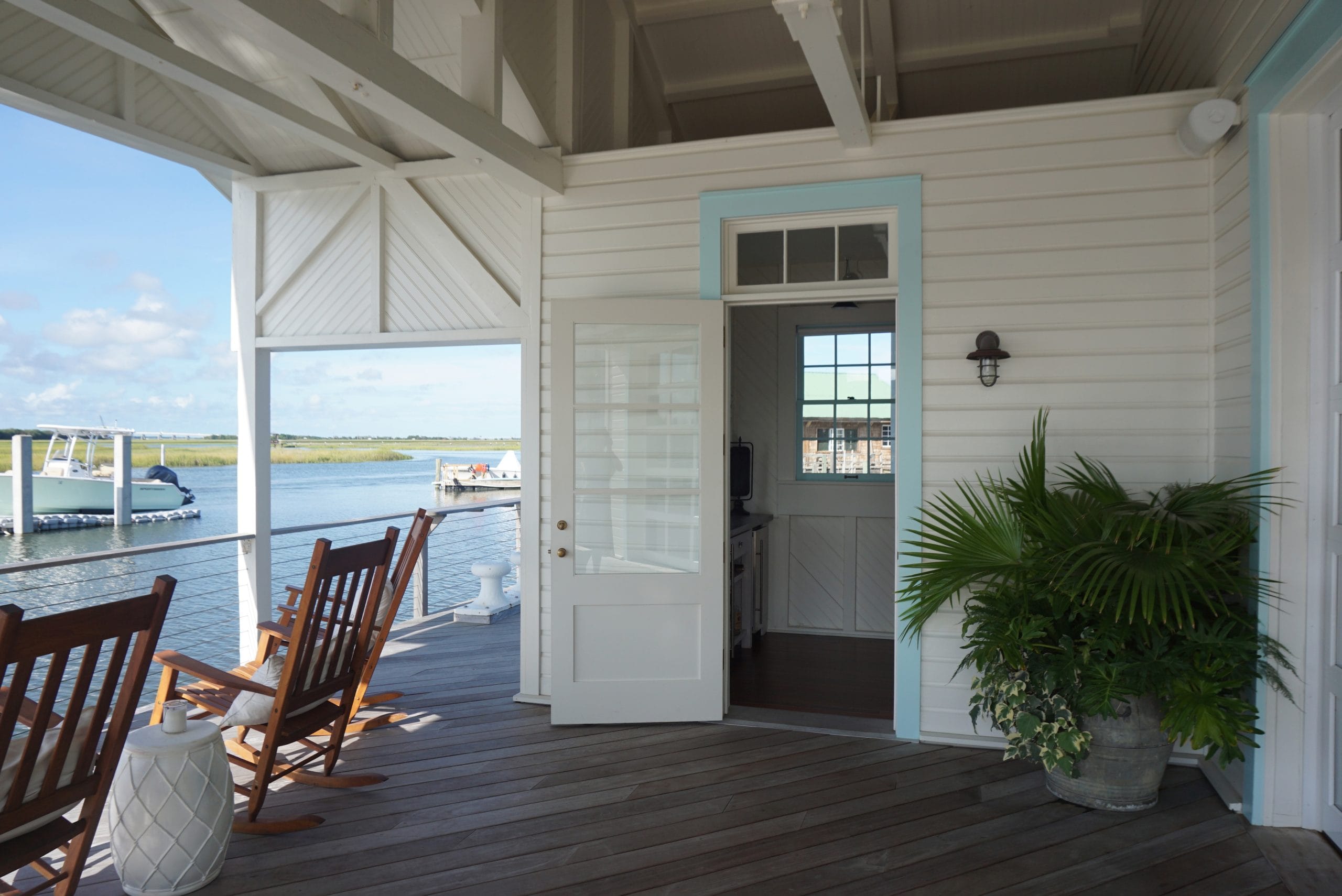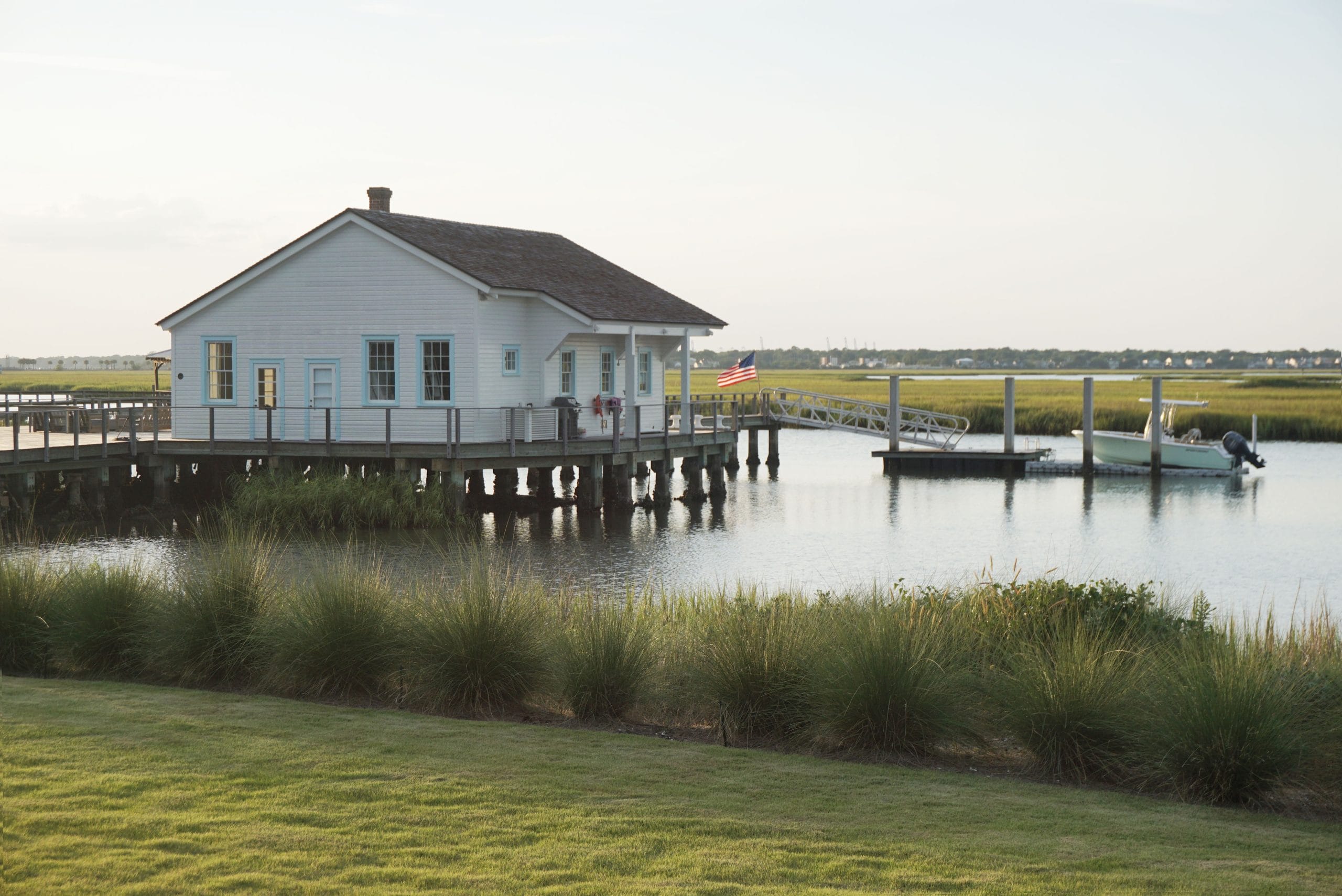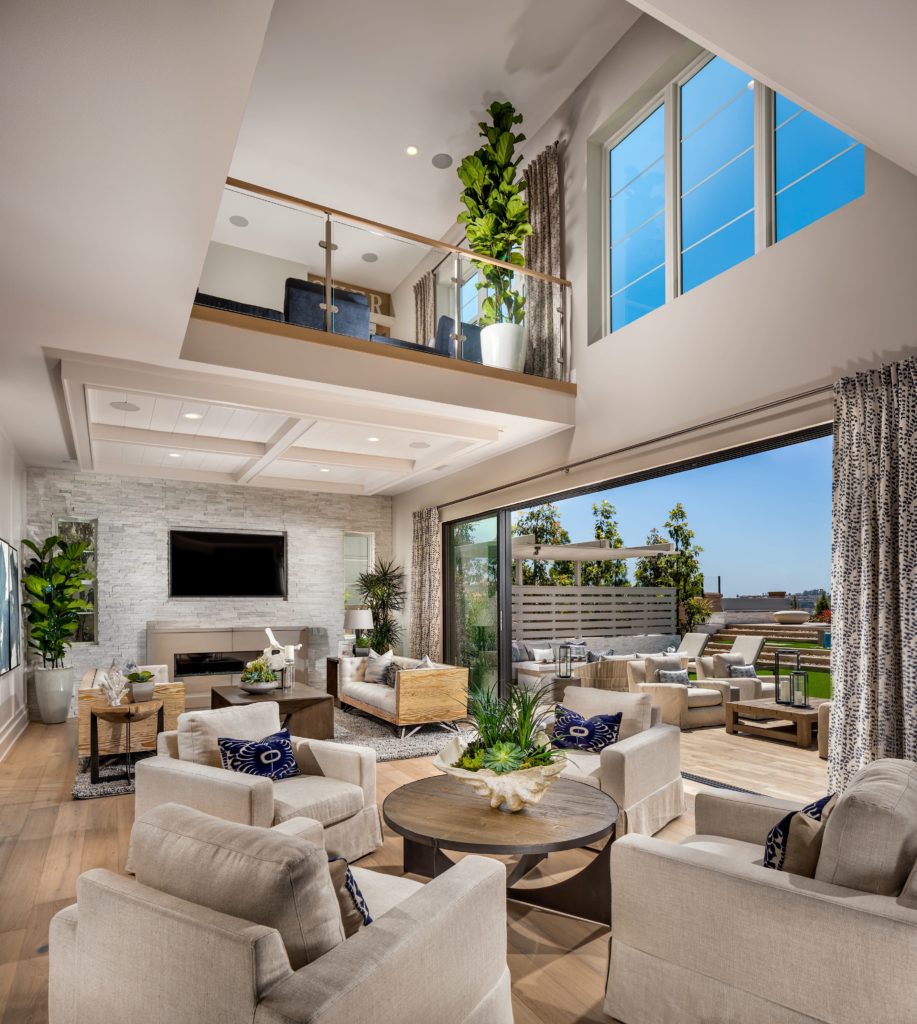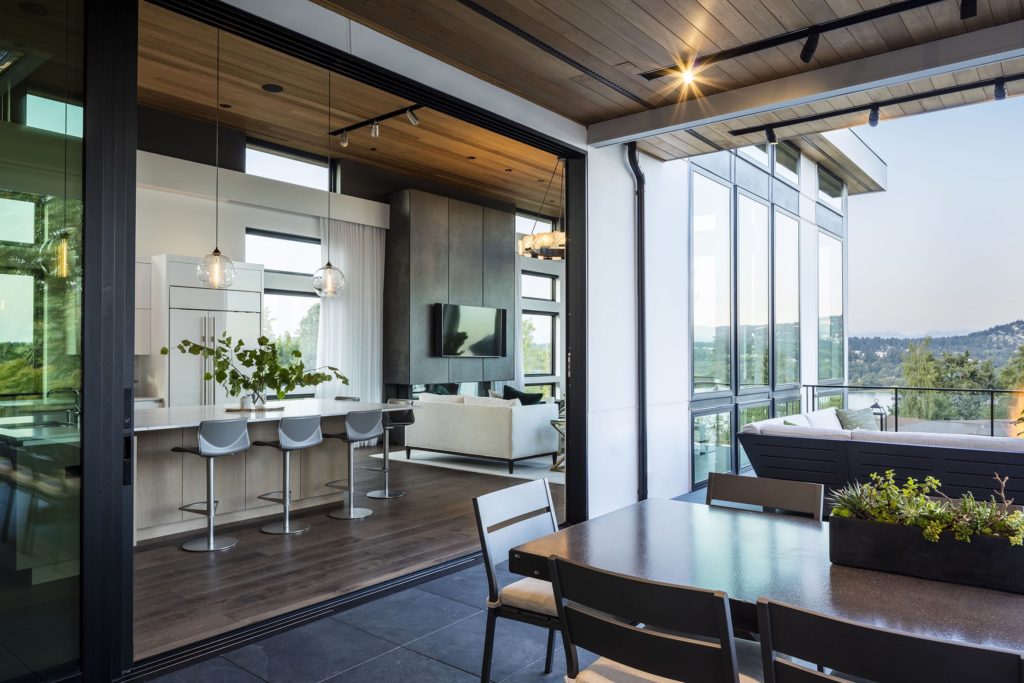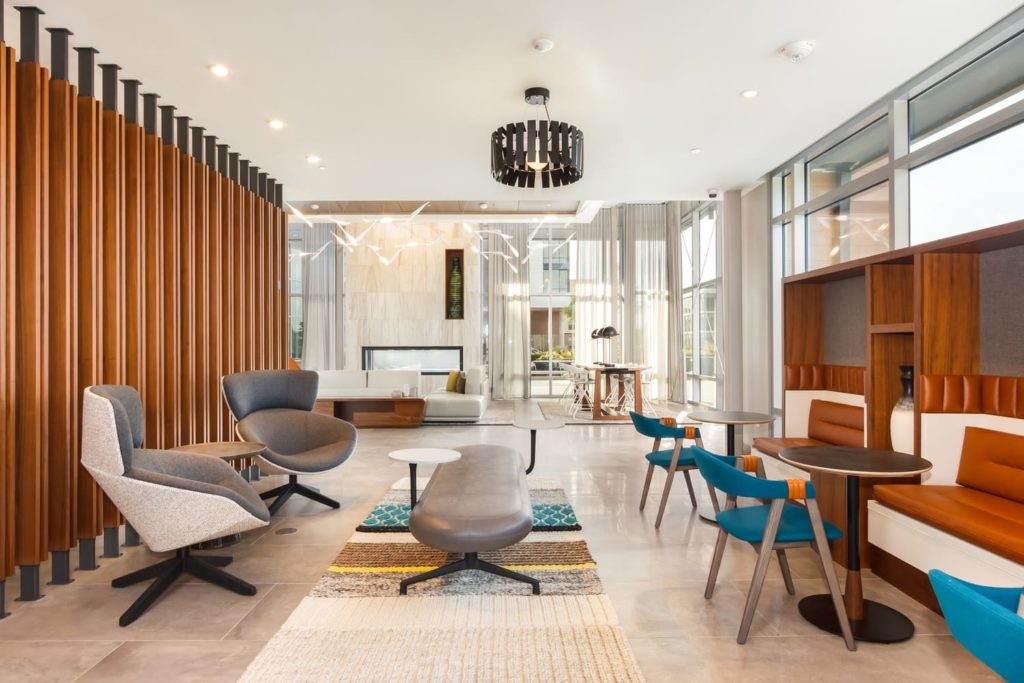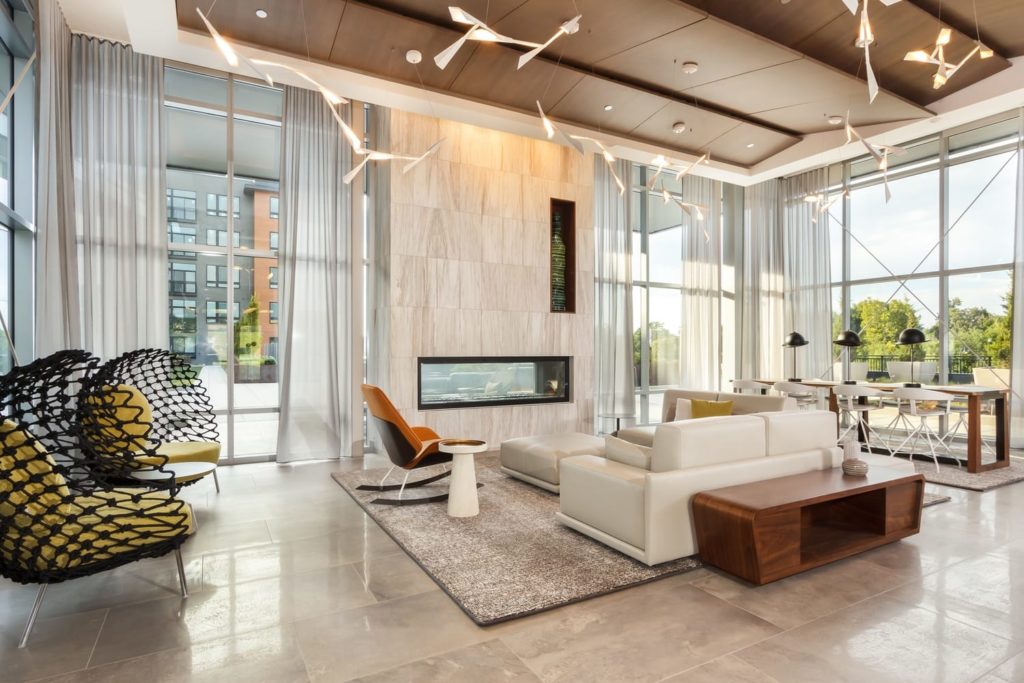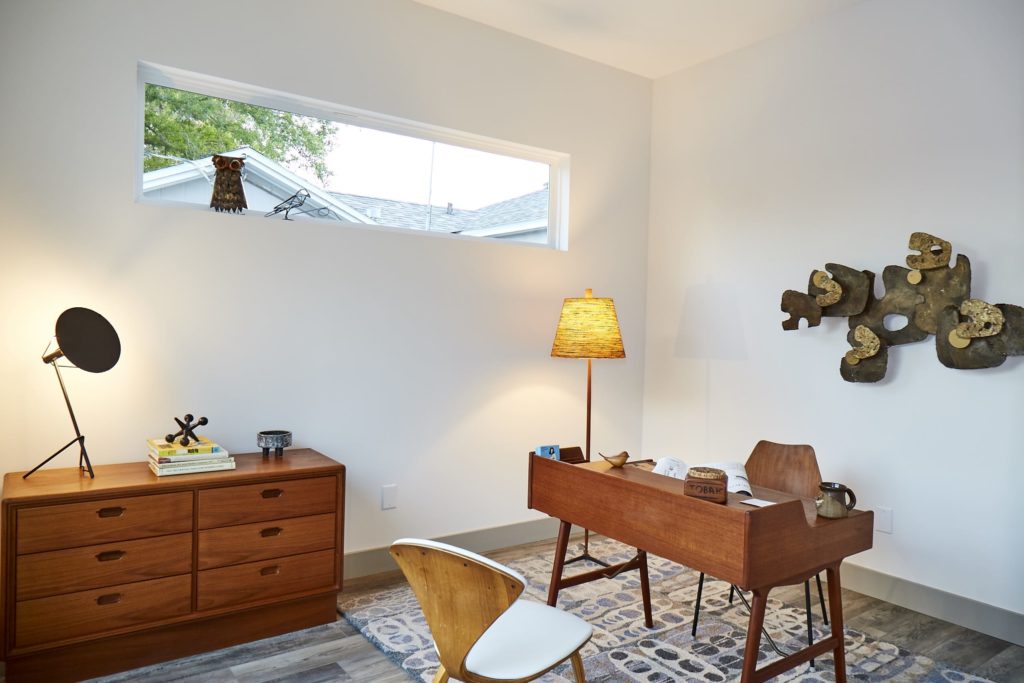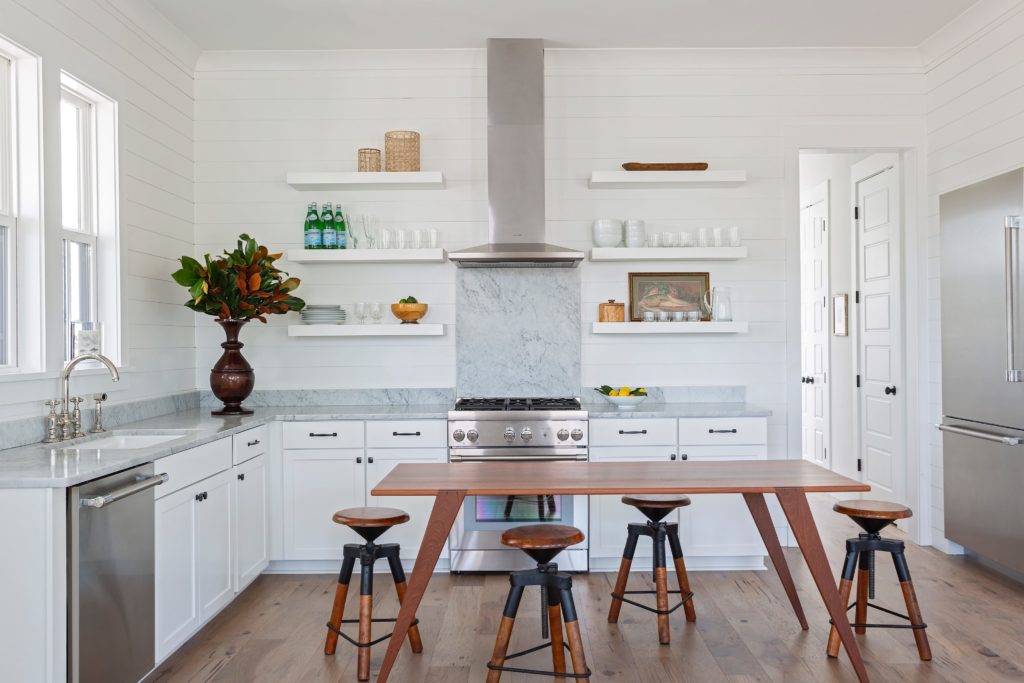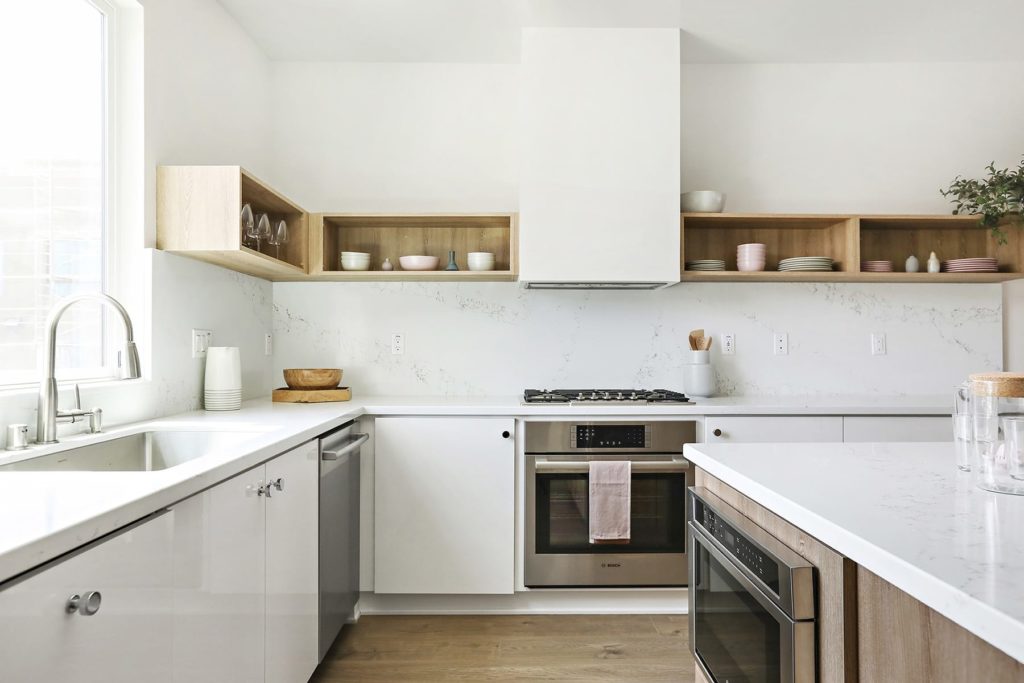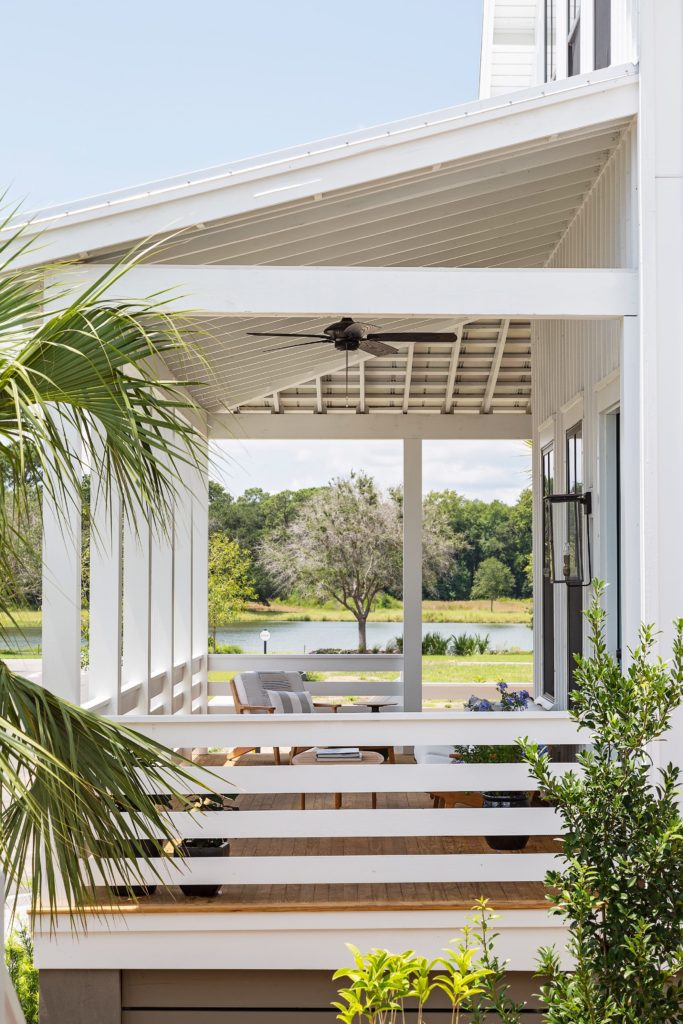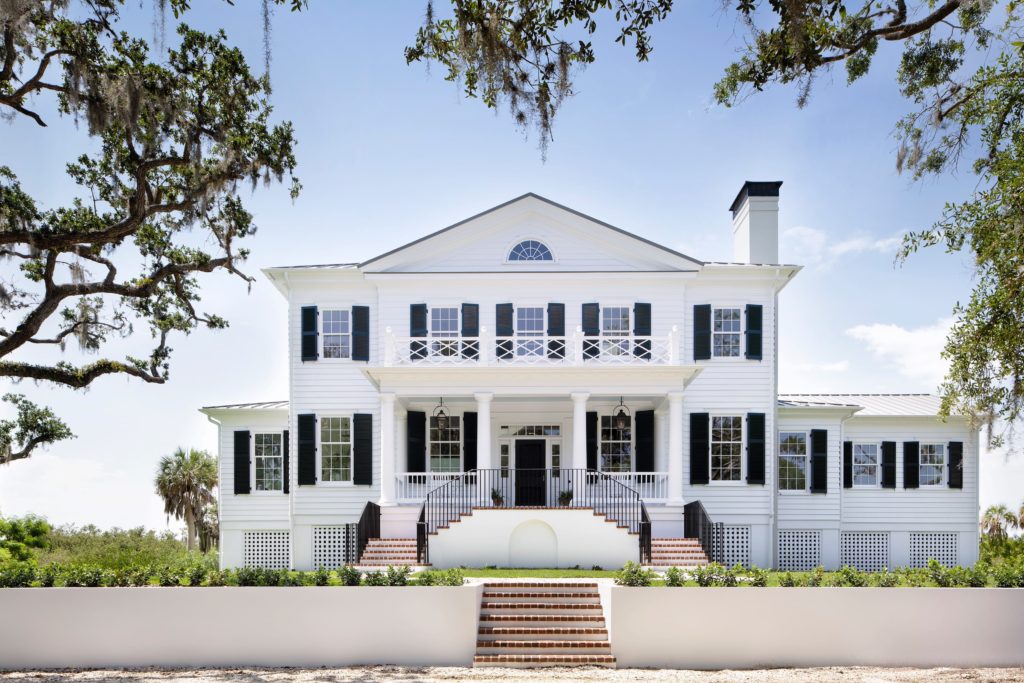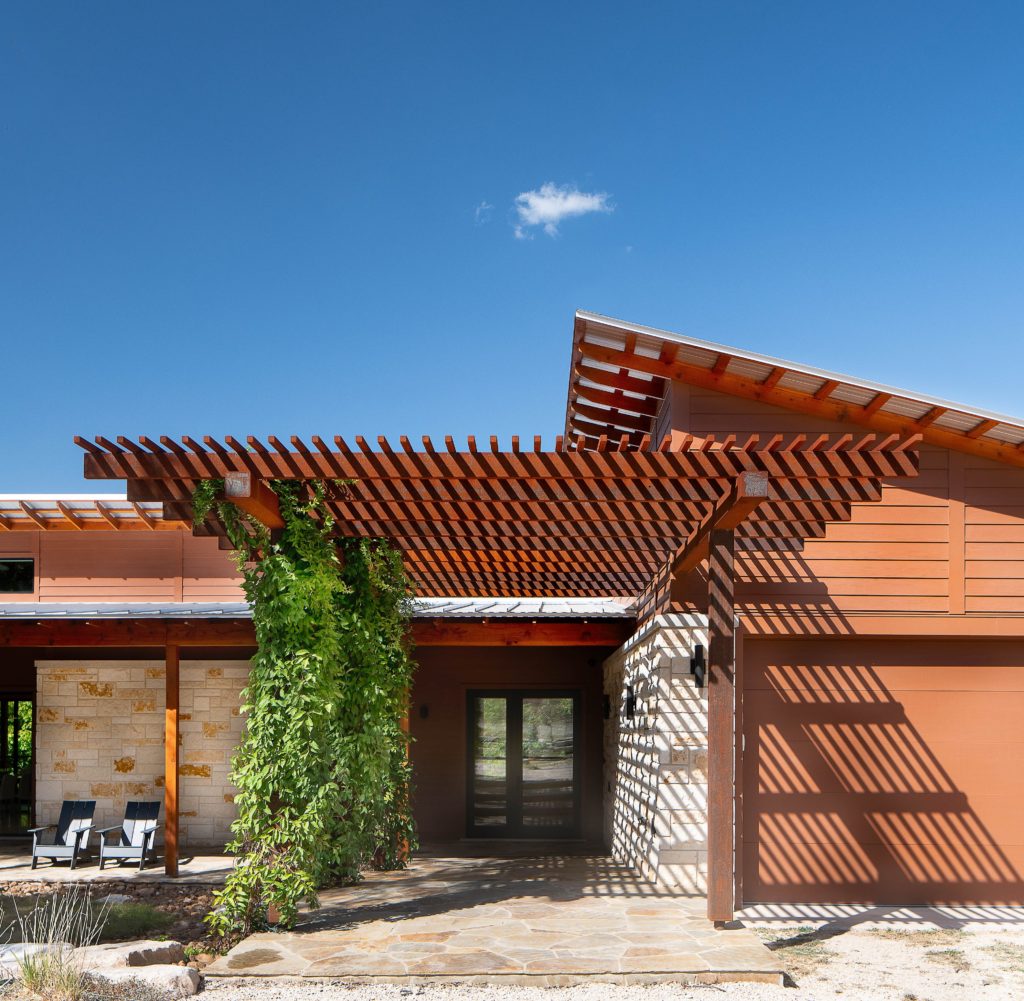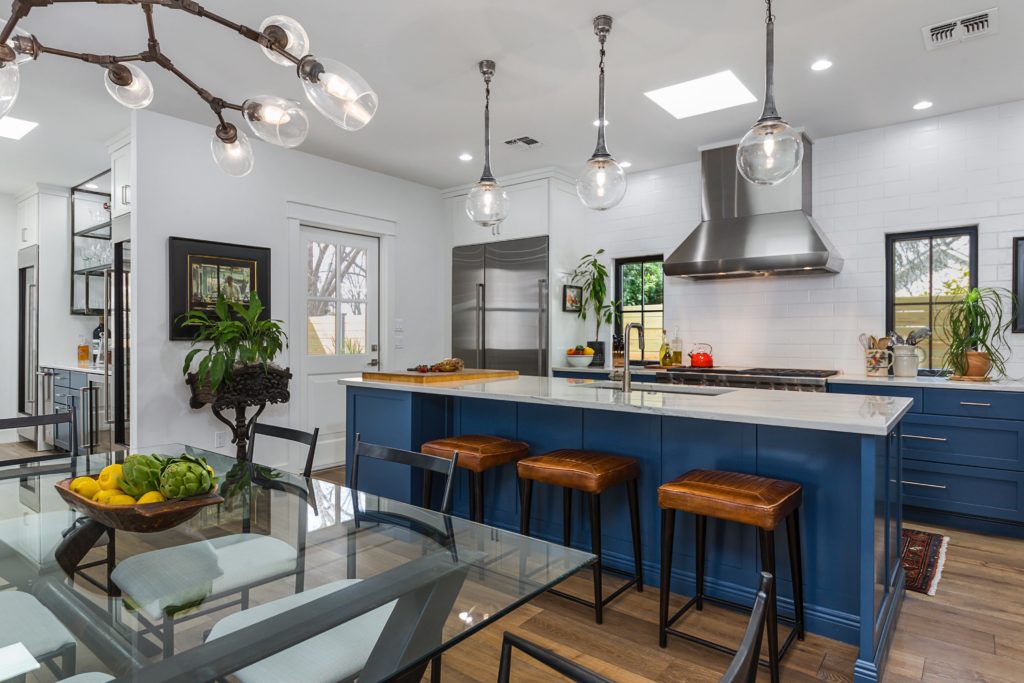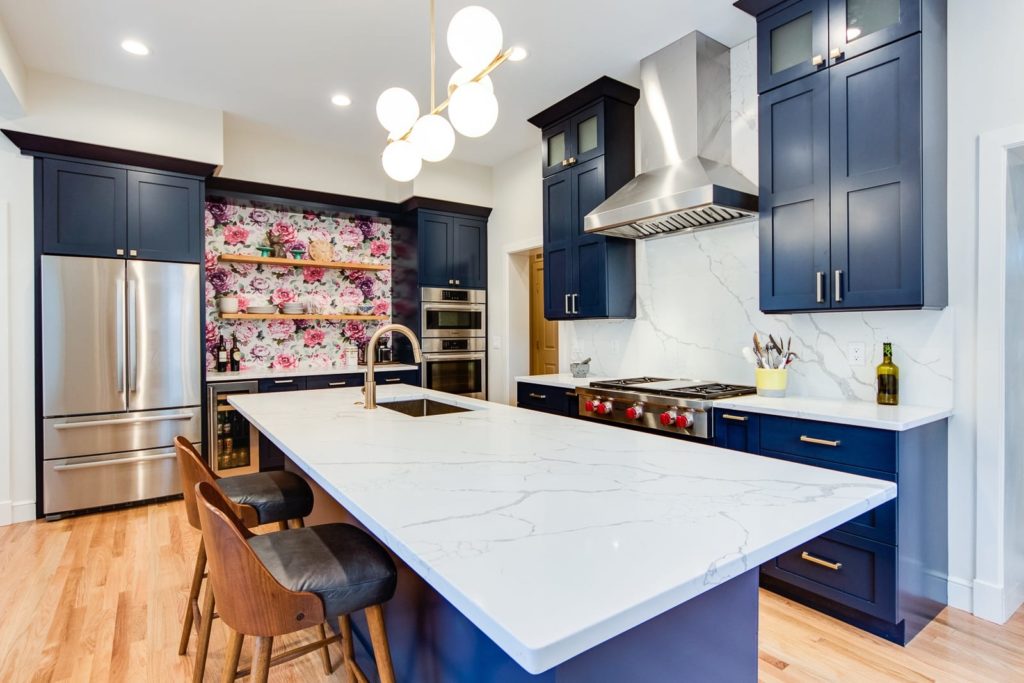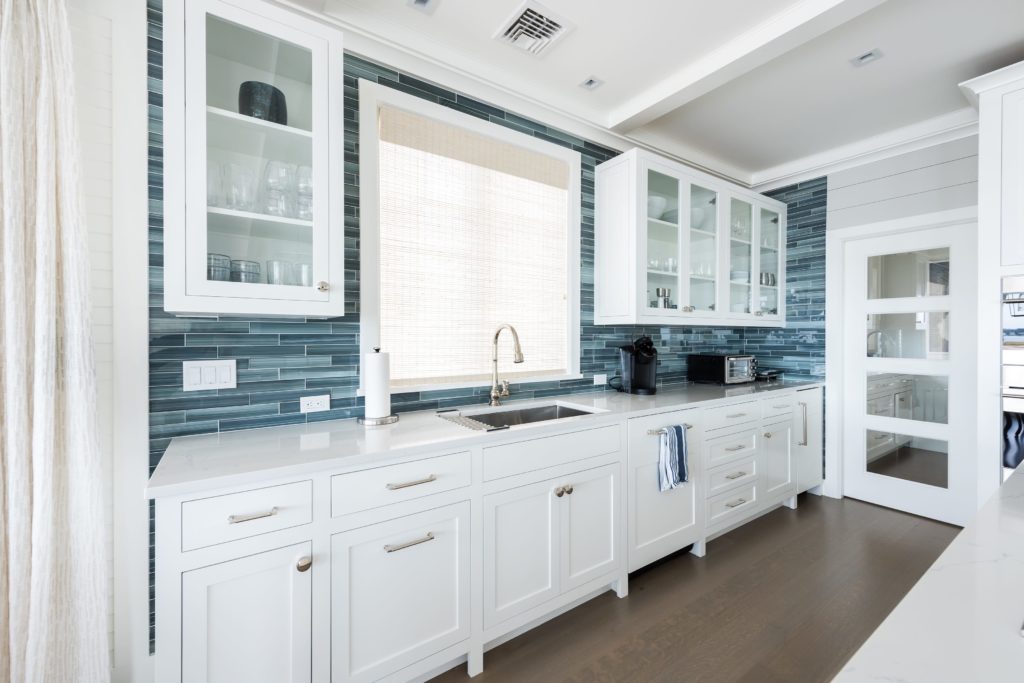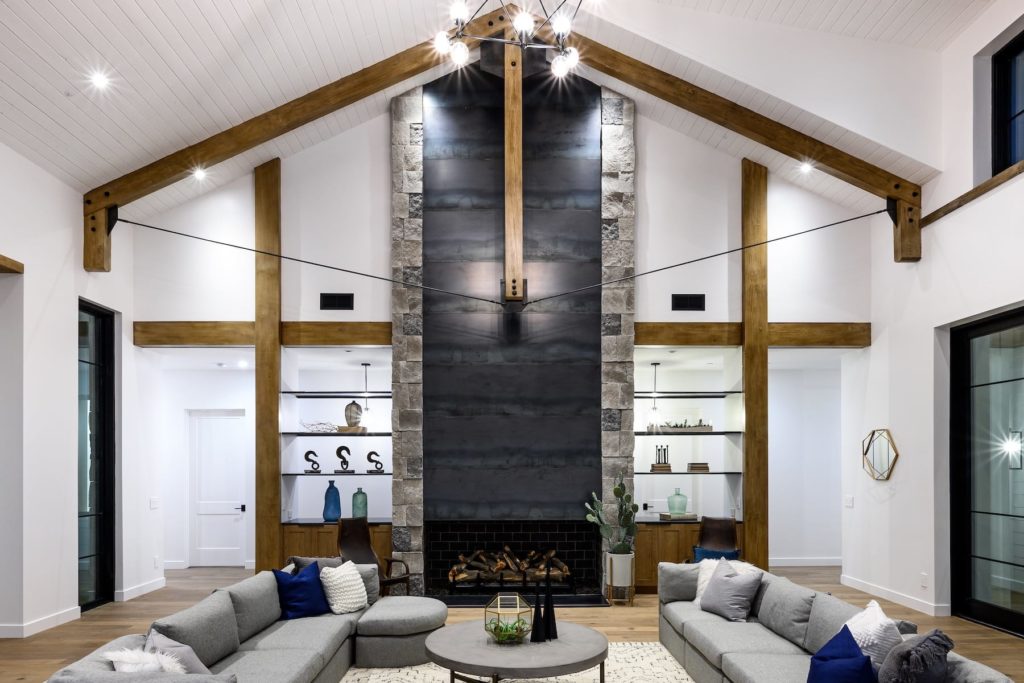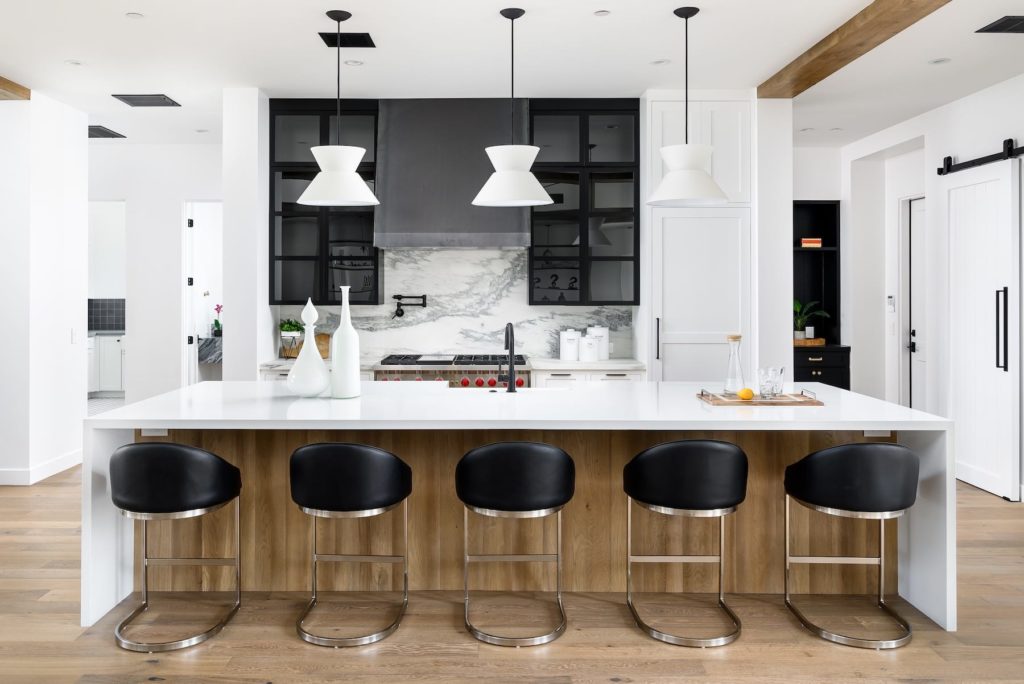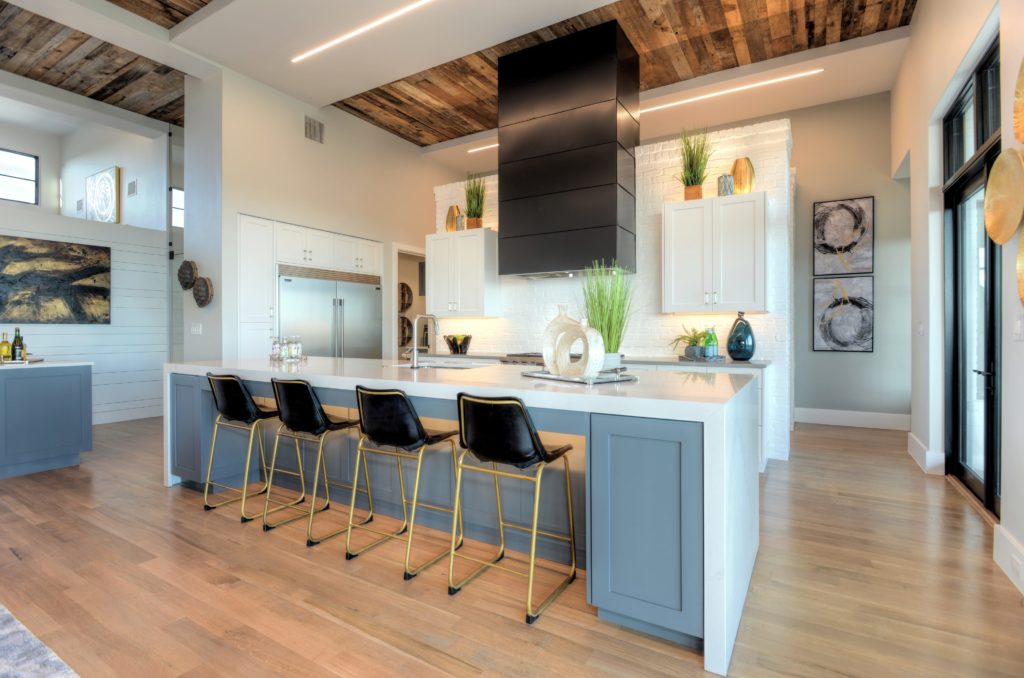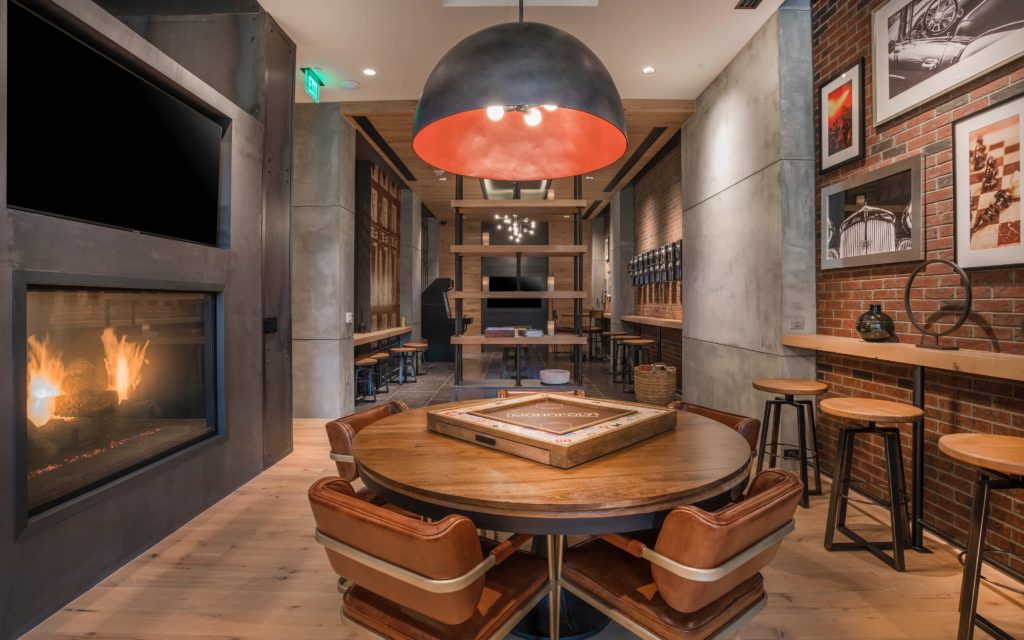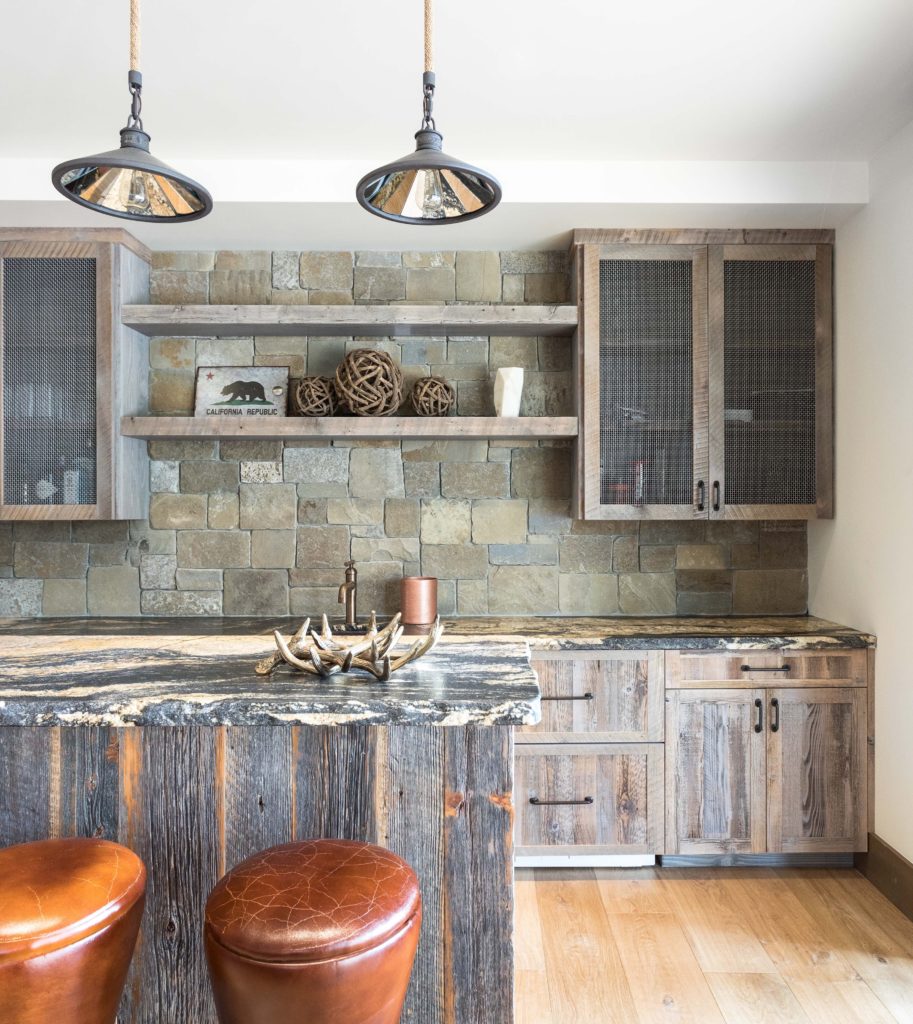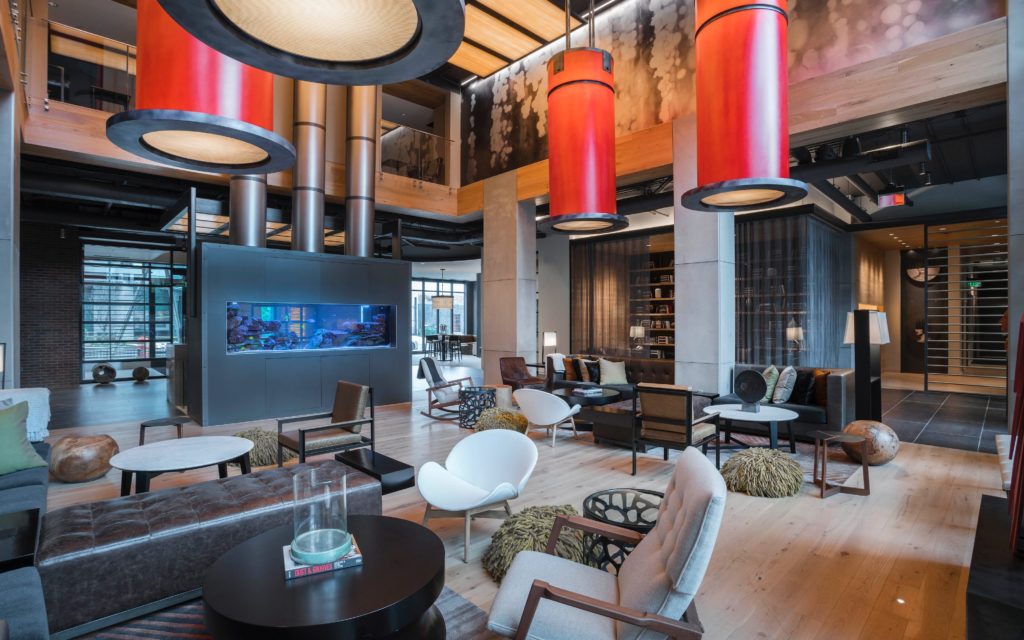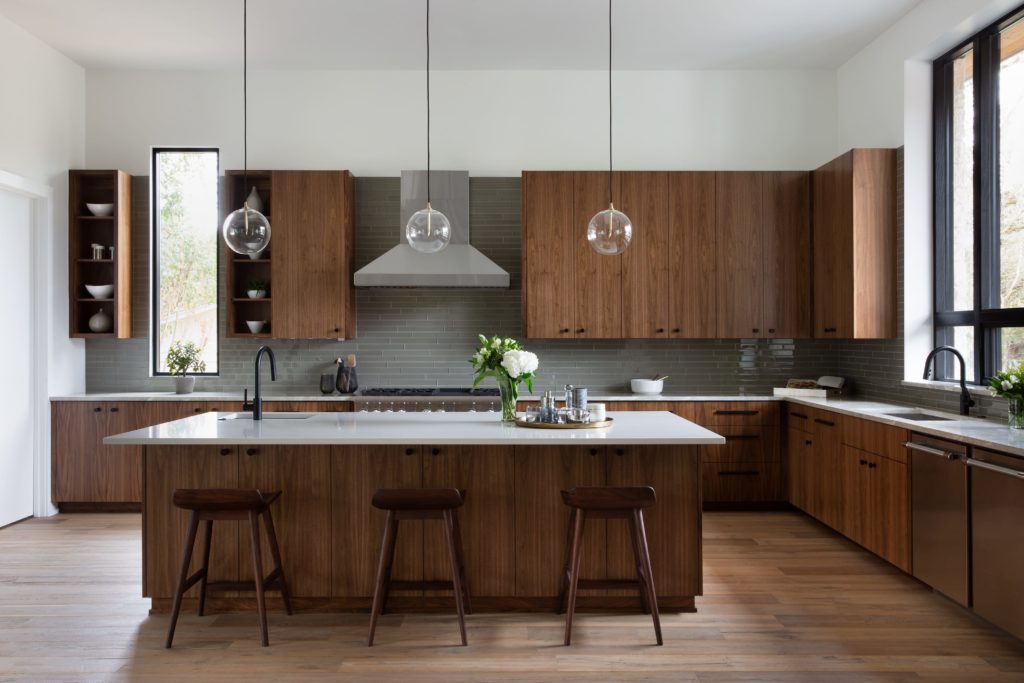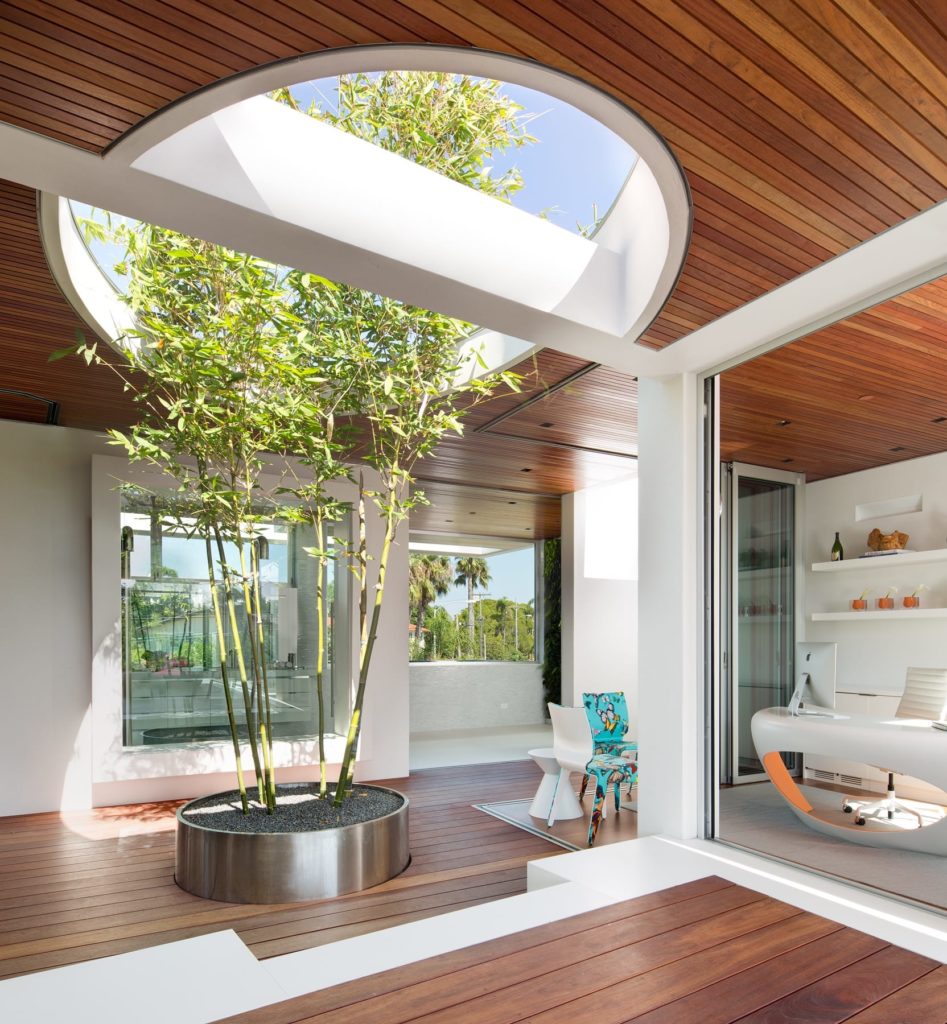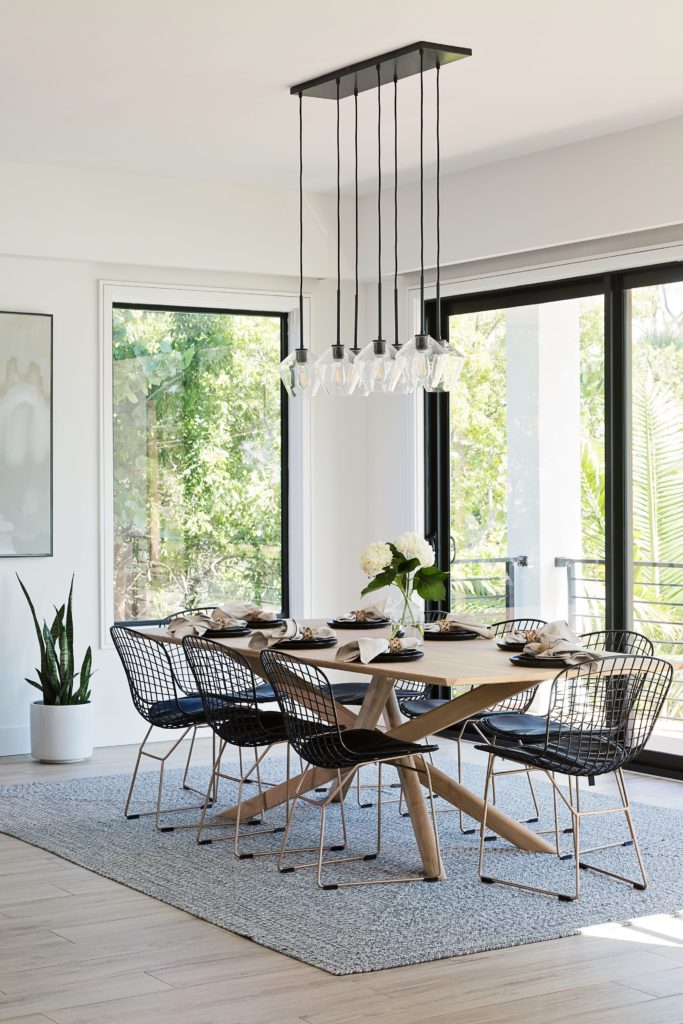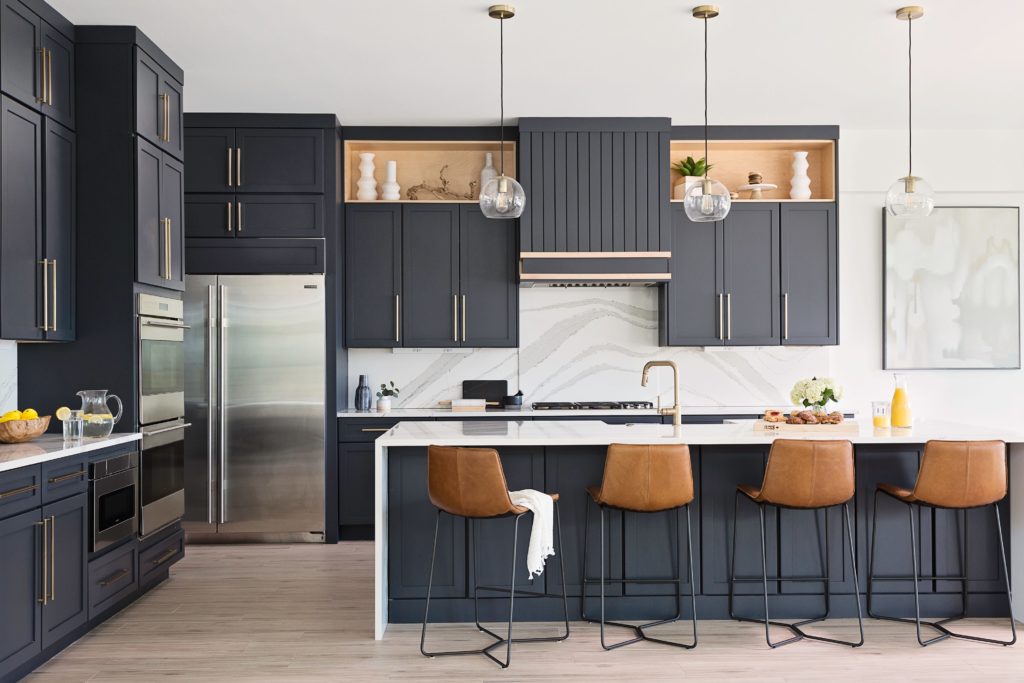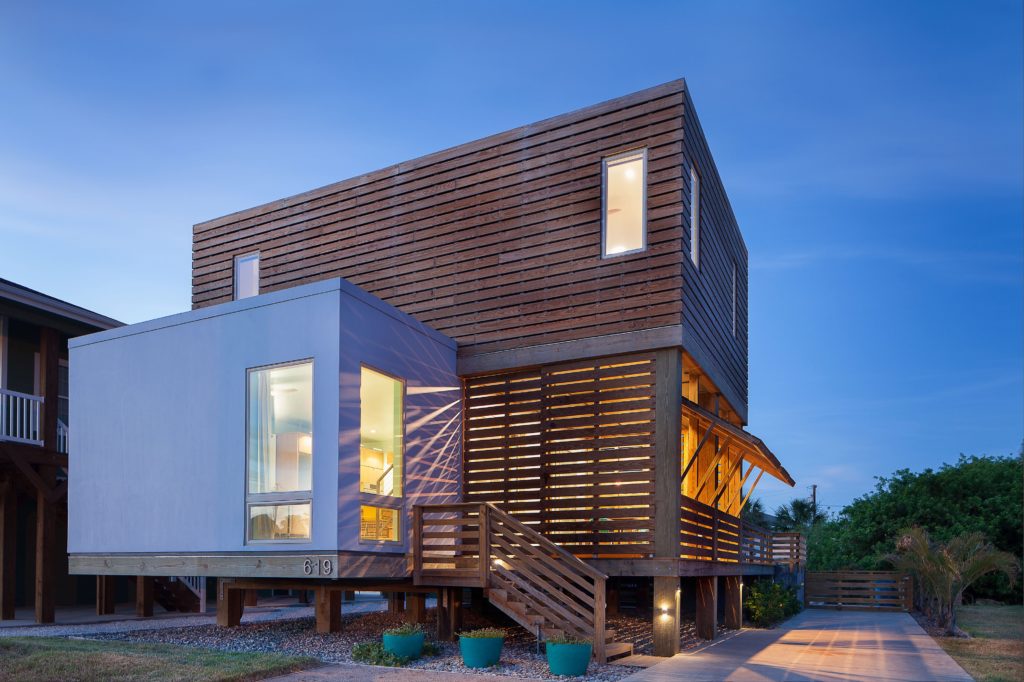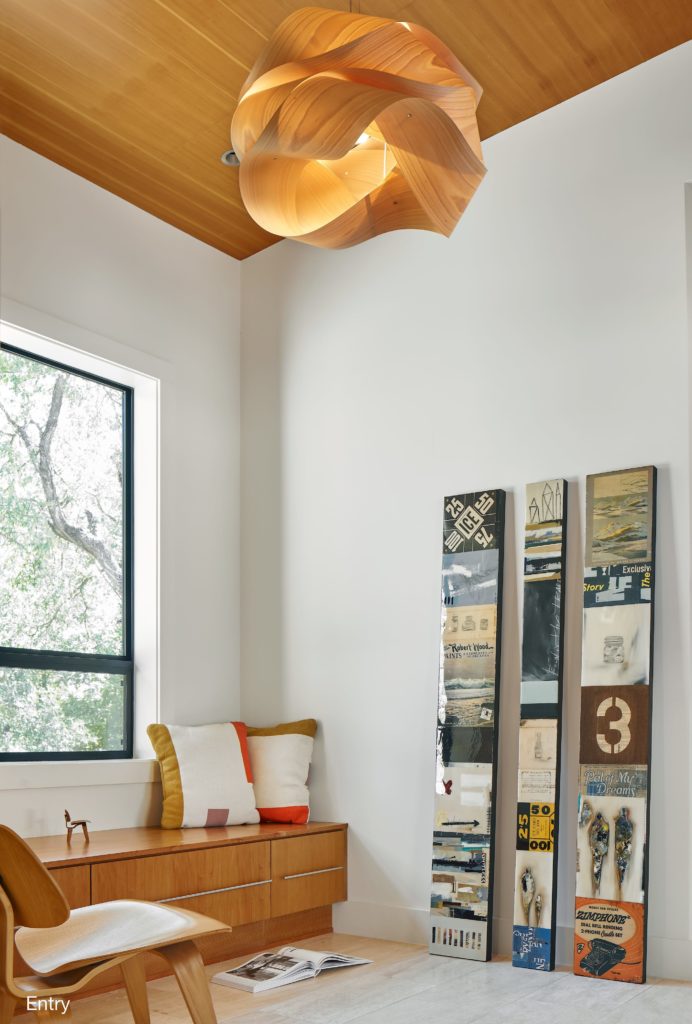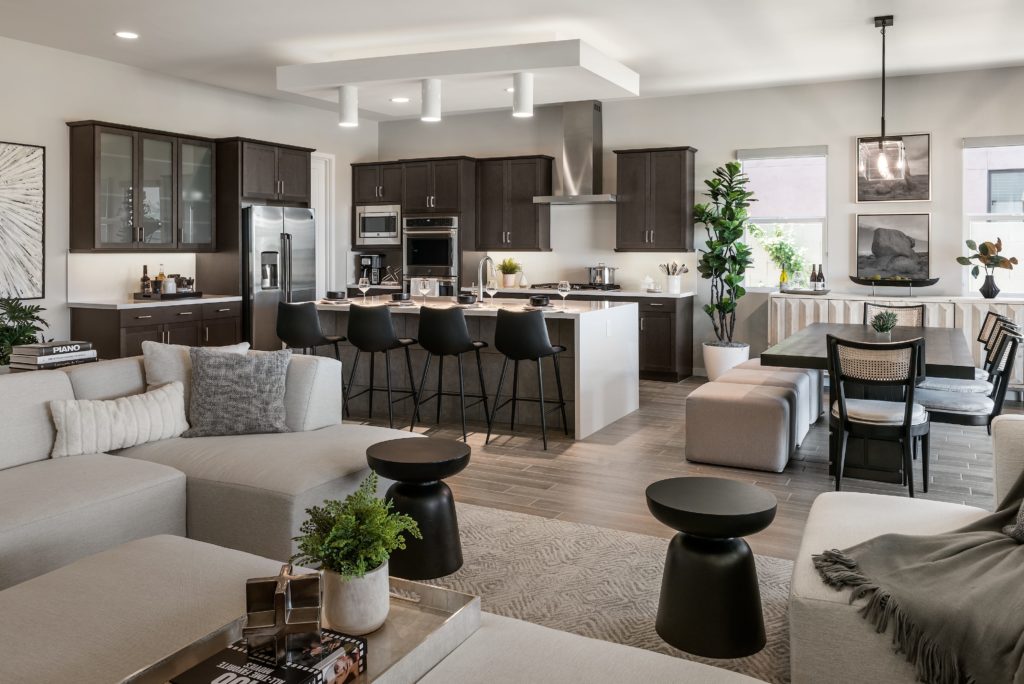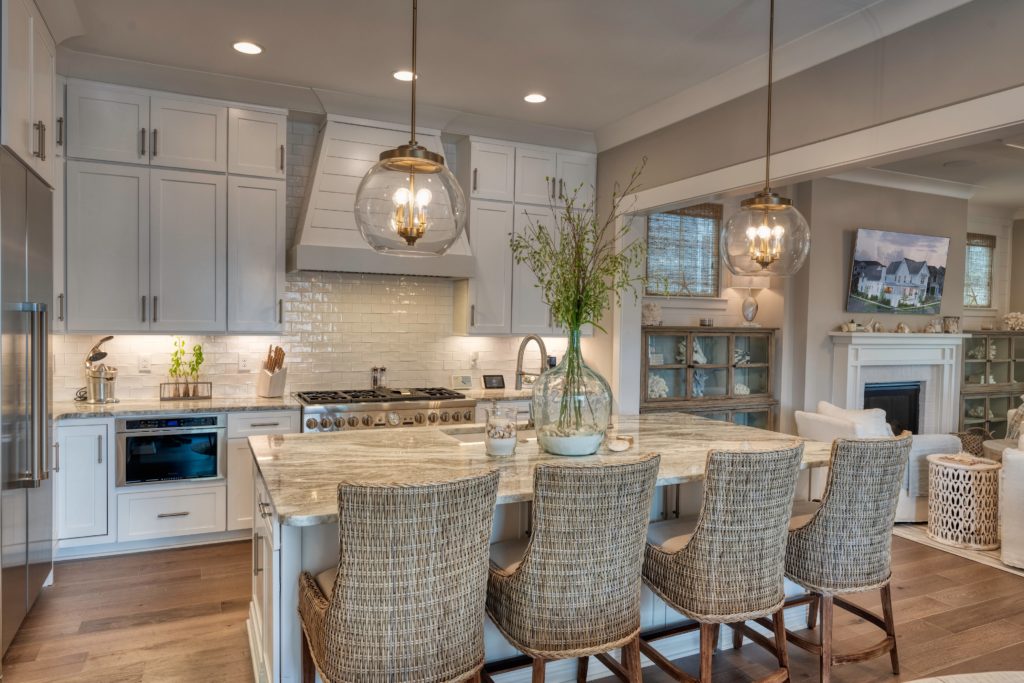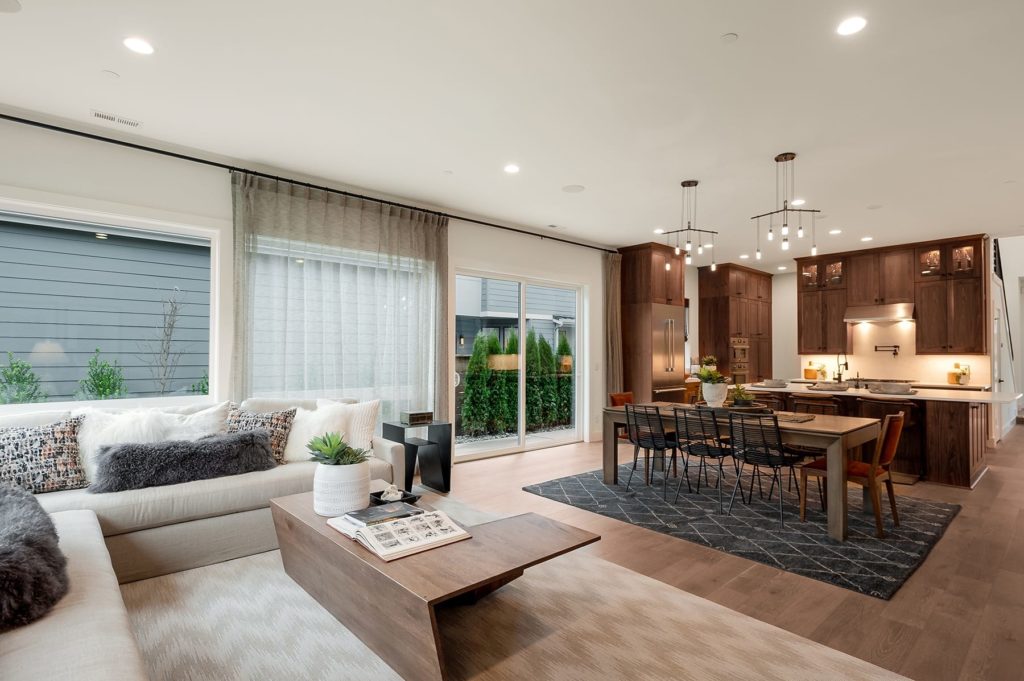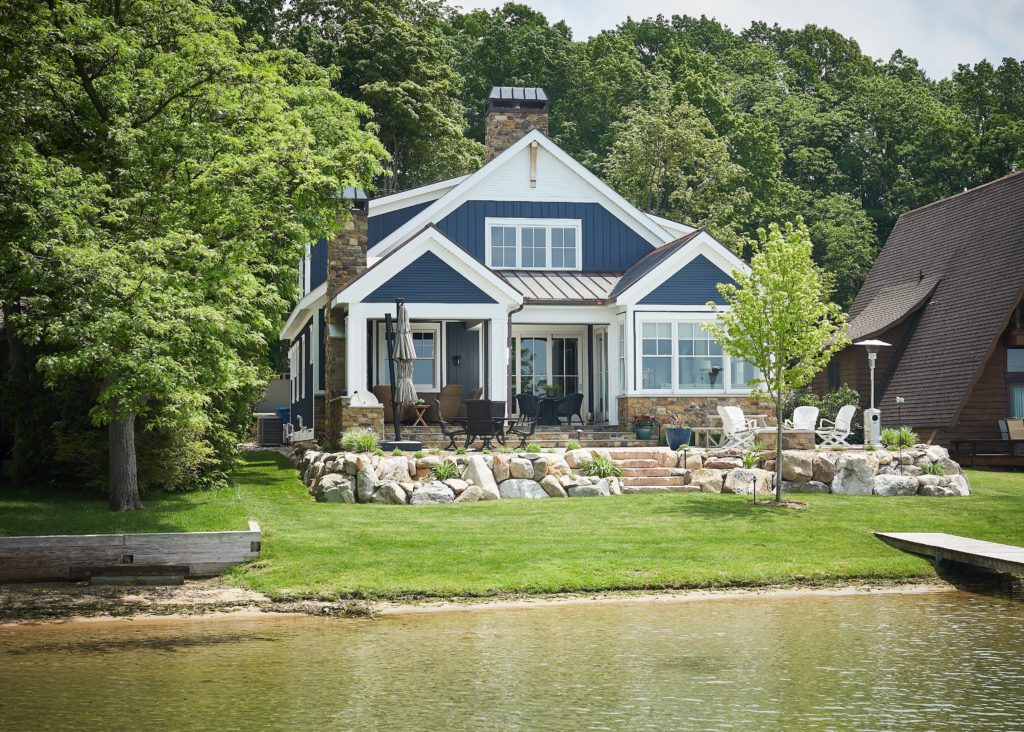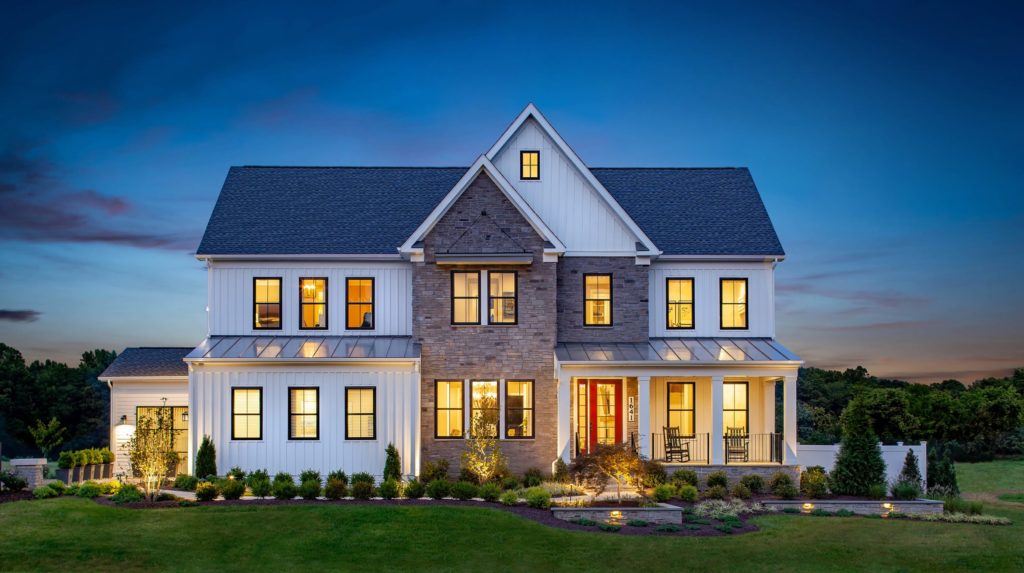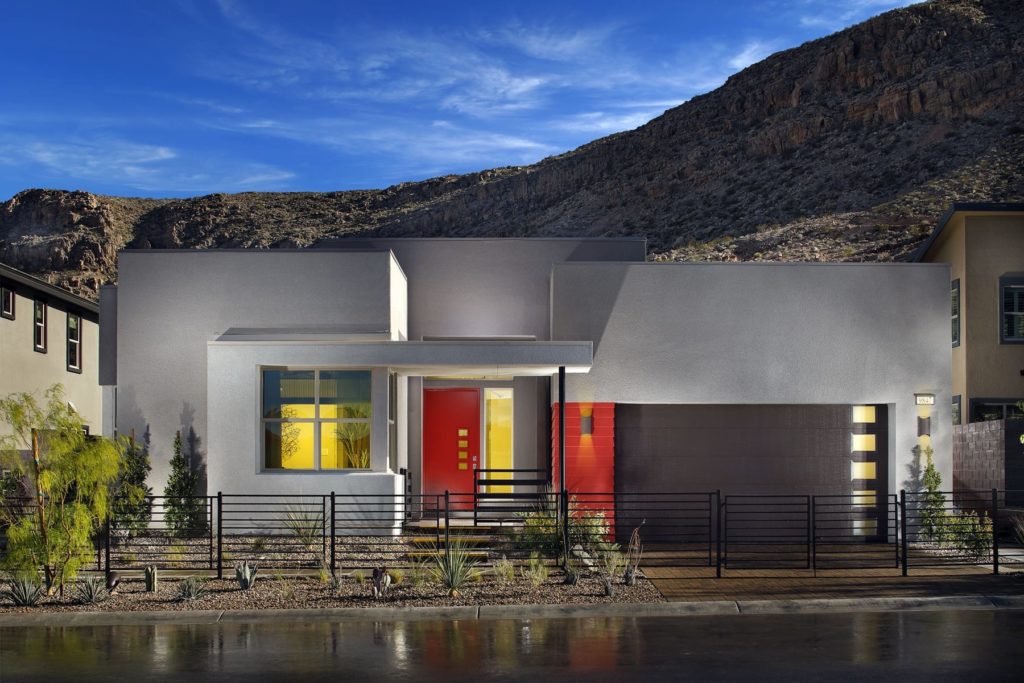NAHB’s Best in American Living Award (BALA) winners exemplify the best of the best in national design trends, as identified by the industry-leading BALA judging panel each year.
Using these winners and trends, NAHB’s Design Committee hosts an annual Design Trends Roundtable during the International Builders’ Show. Trends are expanded upon, debated and added to, resulting in a comprehensive collection of trends. These trends are subdivided into five main categories: overall design, how we live, architectural features, colors and materials, and design details. Expect to see these trends across the home building industry this year and beyond.
Overall Design
Thoughtful, Well-Edited Design
Architects are pushing for more character and uniqueness, especially in production homes. Well-edited doesn’t necessarily equal simpler, but it does mean there needs to be a genuine purpose of place and points of interest that draw the eye across the façade – without all the fussiness of past decades.
What’s Old is New Again
A renewed focus on genuine sense of place makes adaptive reuse and historic preservation projects a focus of 2020. By focusing on what came before, designers can build on history instead of starting over, and residents will feel more connected to the place they now call home. Through preservation and adaptive reuse, builders and designers can capture parts of our heritage. It all boils down to this: Why get rid of a sense of place, when it’s already there?
How We Live
Sophisticated Indoor/Outdoor Connections
Having indoor/outdoor connections in a design enhances livability and provides a great amenity to future residents. With new technologies and increased availability of glass walls, pocket doors, and large windows, new and remodeled homes alike are benefiting from seamless indoor/outdoor connections, both visually and physically. Even on tight lots, architects are finding design solutions to ensure every home has a view of or access to outdoor living.
Pool and landscape designs are more an extension of interior circulation and design, rather than an afterthought, and are even more accessible, both visually and physically, thanks to increased indoor/outdoor connections.
High-Design Multifamily Amenities
Multifamily projects are taking their cues from the hospitality industry and designing higher-quality lobbies, leasing offices, mail centers, etc., to be true amenity spaces for residents.
Flex Rooms
Flex rooms are a big draw for a potential buyer, especially if they anticipate the needs of their family changing while they own the home. Grandparents could move in, a relative could come to stay, or they could start a new business, and the home needs to match. Flex spaces are replacing traditional guest suites. Hidden spaces, tucked-away furniture, and furniture that transforms allow for even greater flexibility.
Architectural Features
Nontraditional Storage Solutions
All kitchens must come with upper cabinets, right? Wrong. Maybe as residents hope to declutter, so, too, does their storage. Instead of traditional cabinetry, designers will opt for shelving, both as a storage solution and as a design element.
Outside of the kitchen, architects are creating more artful interpretations of traditional storage spaces, like wine cellars or under-stair displays. Artfully crafted, these storage areas purposefully blend into the room, instead of another typical closet door along a hallway.
Architects are also incorporating floating cabinets, often starting first with the bathroom vanity and extending to kitchens, entertainment centers, and more.
High-Quality Signature Entries
In our often car-centric society, residents spend a lot of time coming into their homes through garages. In 2020, expect to see a greater focus on front entries and improved streetscapes. The entry extends behind the front door and includes the entire entry sequence: How will visitors and residents access the home?
From traditional and highly ornamented to sleek and modern, the difference between a standard “front door and porch” and a high-quality signature entry is in the details. Would a pop of color or the addition of a new texture add another layer of interest? Is there a way to streamline the design to capture an “urban chic” vibe? What about an interesting way to incorporate the house number into the design, instead of as an afterthought?
Expansive, Large-Format Windows
Almost a standard feature in single-family custom homes, expansive, oversized windows — often with limited vertical interruptions — are on trend in all housing types. Even in denser areas, architects are finding interesting ways to incorporate large panel glass that maintains privacy from nearby neighbors. Architects are also including a larger variety of window shapes and sizes, even on the same house, and sometimes removing all window grids in favor of large, uninterrupted glass.
Color & Materials
Colorful Kitchens
Three words: white kitchen fatigue. No matter the aesthetic, color finds a place in many of this year’s winning kitchens. Often found first on the island and then on lower cabinets, many designers are finding ways to punch up today’s new and remodeled kitchens. Judges saw cool aquas, dark woods, and new, colored textures in many of this year’s applicants.
But just because there is the addition of color doesn’t mean that white is “all bad.” When venturing into whites, think outside of the traditional white counter on white cabinet on white backsplash on white ceiling. Would a fun, colorful backsplash fit with your client’s aesthetic? What about a drop ceiling using rich wood tones, paired with a crisp, otherwise white kitchen?
Crisp Colors and Warm Woods
In 2020, fresh and clean interiors are the name of the game. More designers are pairing otherwise “stark” or “cool” palettes with warm wood tones — either real wood or manmade — to create a look that is both dramatic, yet homey; high-end, yet comfy.
Texture Paradise
Every detail matters, from ceiling textures to shelving choices to mullion size, and today’s educated buyers won’t settle for less. In 2020, designers are opting for more mixed metals, mixed materials, and mixed textures to add depth to their designs.
Wallpaper, back on trend, is a great way to add additional texture to a space. Instead of full room papering, designers are using wallpaper to create statement walls, focal points, or large pieces of art.
Greater Use of Wood
Wood is very clearly not an “accent” to other materials. Instead, it takes center stage in many instances, from floors and ceilings to cabinets and siding. In past years, designers have sometimes opted to paint or treat wood, but in 2020, we expect wood to mostly be incorporated in its natural state and color.
Design Details
Curated Details
A telltale sign of a BALA winner is its attention to detail, from switch covers to realistic staging touches to doorknobs and handles. From single- to multifamily, from remodels to communities, it’s clear that buyers want their next home to feel personalized to their taste. Details such as cabinet pulls, stair rails, and faucets are absolutely not an afterthought, so factor them into your designs early.
Another detail to add? Unique stove hoods, which can be a tool to make kitchens feel more high-end or custom-designed. Integrate the hood into surrounding cabinetry — same materials and/or colors — to allow it to blend into the kitchenscape and create an overall cleaner look.
Unique Wood Detailing
The use of wood — real and faux — has been trending for the past couple of years. This year, expect unique wood details and use of wood to create texture, ambiance, lighting design, and more.
Personalized Lighting Design
Numerous companies on the market now offer distinctive fixtures, from chandeliers to pendant lights to flush-mount lighting. No matter the price point, buyers want a personalized feel to their homes, whether rental or for-sale, and lighting is an obvious choice to offer that personalized feel. Lighting, like other design details, should not be an afterthought. Simply installing what’s on hand without added thought about placement won’t fly with the 2020 buyer.
What do you see in your neighborhoods and regions? Talk to your peers, your consumers and your local association to stay on top of trends for the year ahead. What’s happening with landscapes, streetscapes, and exterior materials? Are there color palettes that resonate better with your target buyer? Is there an increased focus on healthy and high-performance homes ? Have more questions? Reach out to a member of NAHB’s Design Committee for guidance.
Overall Styles & Trends
| Modern influence, which originally started mostly in high-rise multifamily, is picking up speed in low-rise (three stories) and single-family detached |
| Contemporary/modern architecture is more grounded and less fragile-looking than in years past, especially in elevations; architects are editing modern elevations to avoid the past pitfalls of getting carried away with too many elements and materials and a loss of balance in design |
| Pre-fab framing packages and modular housing |
| Even on modern elevations, more “charming” elevations with traditional elements or nods |
| Diverse neighborhood character; no prescriptive “right” or “wrong” architectural style |
| Modern farmhouse, sometimes referred to as the “HGTV effect,” remains prevalent |
| Landscaping is more important than ever. |
| Modern farmhouse in more colors than just white. |
More Color and Material Trends
| It’s “not your grandma’s” wallpaper – updated designs, textures, prints, colors, etc. |
| Wallpaper is easier to use and can often be a cheaper option to personalize a home |
| No- and low-VOC wallpaper, following the trend of an added emphasis on healthy living |
| Flat-panel cabinetry, as a nod to Mid-Century Modern |
| Lacquered/mirrored-effect cabinets |
| Stainless steel cabinets in some regions to match stainless steel appliances |
| Cementitious board on exteriors (departure from panel board), allowing designers to create new patterns and paint to match the aesthetic |
| Painted brick exteriors: can use a cheaper, less desirable color brick and paint it to save costs and look chic |
| Long-format brick |
| Black window frames across architectural styles, despite their challenges to keep clean and scratch-free during construction |
| A general preference toward lighter stains |
| Woods mixed with whiter grays |
| Dark bottom cabinets paired with lighter top cabinets in kitchens and baths |
